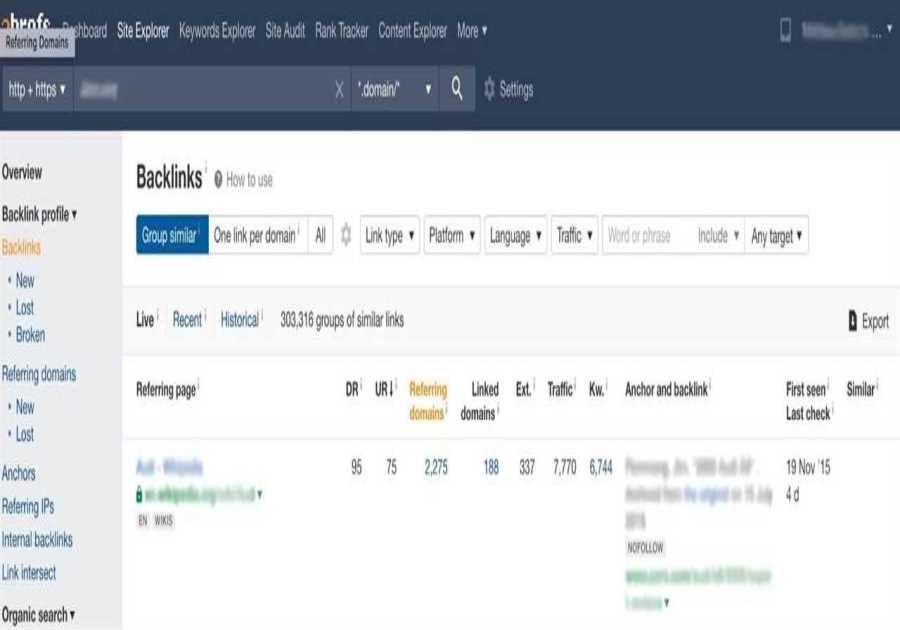
Posted by CrystalontheWeb
Structured data is one of the most effective ways to increase the visibility of your website content and increase the sustainability of your SEO as Google implements regular updates to the SERP environment. Over the last five years, many of Google’s most game-changing SERP features have been driven by the use of structured data from across the web. Google for Jobs, Google Shopping, featured snippets, how-to instructions, recipe cards, knowledge panels, and other rich snippets all serve content from sites with structured data.
So, when we think about how small and medium-sized enterprises (SMEs) can compete in today's ever-evolving SERP landscape, time and time again, well-implemented structured data is what makes the difference.
In this blog I’ll explain the following:
What is structured data?Why should SMEs prioritize structured data implementation?How do you identify which structured data is best for your SEO strategy?Strategies for adding schema to your siteHow to measure and demonstrate the impact of structured dataIn my experience, well-implemented structured data is effective for websites of all sizes and in all verticals. For my own clients, schema implementation has enabled growth, improved performance on search and created opportunities to reach new audiences.
For an established national retail brand with a thriving social media following, schema optimisations contributed to a 50% increase in organic conversions within a month. And six months on, the improvements we made to product markup, organisation, and blog schema had helped drive a 230% increase in organic conversion value.For a local recruitment site, we combined niche targeted schema and sitemap optimization to increase both organic clicks and impressions by over 80% each, within four months. For an international B2B retailer, improving existing schema formed the basis for marketing strategy that enabled us to grow our tally of ranking keywords by an average of 70% across three countries, increase our revenue by 35% when compared to the previous period, and create new marketing channels, within 6 months.For a professional services provider, we built E-A-T centric schema optimisations into a blog and were able to improve average ranking position by 30% in 3 months and by 43% within a year.Though the target markets, objectives and audiences differed in each case, I was able to use schema markup as a strategic underpinning of a wider SEO and marketing strategy. This is because schema has become a fundamental element of scalable SEO.
What is structured data in SEO?
On a website, structured data is a means of defining content with a uniform set of names and values, so that bots and machines can better read, index, understand, and serve the content of your site. While the phrase “structured data” can include elements like open graph for social media, microdata, or indeed any set of data that is organized uniformly (think of your CRM), generally when SEOs talk about structured data, we’re referring to structured data markup in JSON-LD as specified by Schema.org and recommended by Google.
Why is Schema.org structured data so strategically important?
Schema.org has become structured data HQ, because its framework — sets of vocabularies and relationships — was created and is maintained through a cross-platform partnership between Google, Microsoft, Yandex, and other major search engines. They regularly create new schema types and relationships aimed at making the information on the web more easily accessible to users.
Schema.org breaks down content into common vocabulary of predefined @types, which each have predefined properties, and can then be expressed using a common Javascript notation (JSON-LD). Like entries to the Oxford English Dictionary, the team behind Schema.Org are constantly adding new @types and properties in order to keep pace with user needs. At present, there are 778 types, but that number will continue to grow. Each new type brings more clarity, consistency, and ease of access to the information on the web — something that’s brilliant for search engines, and great for your traffic.
What does that mean in practice?
Sometimes when I'm explaining structured data to clients, I describe it as a means of essentially turning your beautiful website into a spreadsheet for robots. They can prioritize and process the critical information about the content of the page without having to understand the layout of your particular Wordpress theme, reams of CSS, or navigate your Joomla configuration.
This means that information a bot has on a page can be more consistent and resilient, even if the content changes day-to-day. So, in the example of a retailer with seasonal specials and campaigns that change the front end home page layout, structured data tells Google the same information about the page in the same way every time:

Why should SMEs prioritize structured data implementation?
Simply put, structured data gives you the chance to jump the queue on the SERP.
When we look at the ways in which Google has enhanced its SERPs over the last few years, what we see consistently is the use of JSON-LD structured data in combination with Google APIs to create new features and new channels for content. Rich snippet SERP features like Google for Jobs, Google Shopping, featured snippets, how-to instructions, recipe cards, knowledge panels, and other monumental changes to the SERP have all been driven or improved by the creation and utilization of structured data frameworks.
Users love these features because they’re multi-media search enhancements, and are impossible to miss as they often take up the entire viewport on mobile:

Left to right: rich results for Google for Jobs, recipes, video
Not a plain blue link in sight.
In many cases, your content cannot be included in these attractive rich snippets without structured data. So, if you literally want to get ahead of the competition, structured data needs to be a component in your SEO strategy.
What are the other advantages of structured data for small businesses?
Along with increased visibility, structured data implementation offers the following advantages for small businesses:
You will likely outpace your local competitors. SMEs are likely to feature within local pack search results with other small businesses. Here, competition for keywords is fierce, but many have yet to incorporate structured data into their sites. This is an opportunity to increase your visibility, gain more market share, and therefore increase conversions.Schema markup is a fully scalable optimization. While some SEO tasks like content creation can require pages to be optimized one-by-one, Schema markup can be built into the structure of the page. This means that once it’s set up, every new product listing page, for instance, would already have the optimization as you expand the site, whether you stock six products or six thousand. The time this saves is especially significant for small marketing teams.Schema markup implementation can be carried out as a single project within a few months. This can be a win for clients and SEOs, because in many cases, there is a clear demarcation before and after, followed by solid results which help to build confidence in further SEO activities, give clear ROI and satisfy clients looking for quick wins.How do you identify which structured data is best for SEO strategy?
With almost 800 types of schema markup available to add to a website, it can be difficult to decide which are the best for your page, but to start, you can introduce or improve some new elements to help you better perform online and complement your existing content or e-commerce SEO strategy.

Does your site pass the schema markup need-to-have checklist?
There are certain sets of schema markup that apply to almost every site, and others — like Product and Job Postings — that are niche critical to effective SEO. As a general rule of thumb, every time I get a new client, I run through the following initial checks:
Do the homepage and about pages have Organisation or Local Business schema?Do the blogs have schema for Articles or Blog Postings?Do the team pages have Person schema?If it’s an e-commerce site, does it have the niche critical Product schema?If it is a recruiter site, does it have the niche critical Job Postings schema?If the business is in another niche with dedicated Google SERP features, does it have the necessary markup?If you answered “no” to any of these questions and the site doesn’t have the appropriate markup, then you should add schema markup to your site.
If the answer to these questions is “yes”, then it’s important to test the quality of the implementation before moving on to the next step. To do this, take a look at Search Console’s Rich Results Report to review pages at scale, or use their Structured Data Testing Tool and Rich Results Test to inspect individual pages. If you see errors, they should be addressed.
How to Find Address Schema Errors

Valid schema markup in Search Console
First, take a look at Search Console’s Rich Results Report to review pages at scale and identify which content is being read as Valid, Valid with Errors or Error.
Valid: If your markup is ‘Valid’, then it is being crawled and indexed correctly. These pages are unlikely to require further action.
Errors: Pages with markup that is identified with an ‘Error’ tend to have incorrect syntax, so you should review the individual page and correct the code as soon as possible. When the changes are complete, use the Validate Fix button, to request reassessment.
Valid with Warning: If your content is showing as ‘Valid a Warning’, then you are likely displaying schema markup with a Missing field. These warnings do not make the page or the markup invalid, but they can make the page less competitive, because the content is less targeted. Review your content to ensure that your schema is reflecting as much of the on page content as possible in order to reduce these errors, and therefore increase the performance of your schema markup.

Schema markup warnings in Search Console
Structured Data Testing Tool and Rich Results Test allow you to troubleshoot improvements to structured data on individual pages. Each of these tools you can enter the URL in question and you will receive itemised information on any errors or warnings.

Warnings on structured data testing tool

Warnings on rich results test
The missing fields highlighted here correspond to properties within the Event schema type. So, to improve this markup, you would look up the definitions of the relevant properties on schema.org and, where applicable, use their example HTML to guide your optimizations.

Property definitions in schema.org

Example "performer" HTML script from schema.org
In this instance, to improve the performance of my schema, I may need to build new performer fields into the CMS, or to work with the dev team to add the content from existing CMS data fields into the schema regex.
In either case you will be making improvements that help you better target and serve users.
Strategies for adding schema to your site
If you need to add schema to your site there are a few options for implementation.
dding schema to single static pagesFor some single pages with largely static content, adding markup types like Local Business, Organization, or a single FAQ page, can be a straightforward process of generating the code and placing it into the HTML of the page. Major CMS platforms like Shopify and Wordpress have plugins to assist with generating the markup for these pages which is easy to implement. Those with custom CMS configurations can use tools like the Schema Markup Generator to generate the JSON-LD, then pass it onto the development team to push it live.
dding scalable schema for bulk implementationBulk schema implementation is almost essential for high volume content creators. This applies to e-commerce shops, but also to those who regularly post standard format content like recipes, blogs, articles, job vacancies, events, training courses, etc.
For these pages, the most effective way to get the most out of the schema on your site is to automate the process by building it into the structure of your site. In most instances, this involves a four phase approach, working in coordination with your developers and clients.

Start with your sitemap. You should have a dynamic XML sitemap that helps Google index pages as they are created, and includes the elements that are listed within the structured data. For an e-commerce site, this means having a sitemap that includes the product listings pages, but also the image sitemap and customer service pages. Optimize for on-page SEO: Ensure that you have strong on-page SEO with good keyword research, headings, and accurate information. Schema offers increased targeting opportunities, so this will help you to double down on any on-page SEO efforts. Organize your content. For bulk implementation, you should work with your content, and try to assign a type and property to each standard field for content on your page. Treat it like a formula that can be applied to each page with the same format. If you don’t have fields that correspond with the required properties for your schema type, add them. If you have a bulk of information, try to ensure that you have properties that support the USPs of your content. Then work with your developers to update your template so that the schema generates consistently across the site. Connect with relevant Google APIs. Once your sitemap is solid, your content is optimised and your markup is in place. check to see if the schema you're using has an API and, if it does, get your site connected to it. Some of the most-used rich results connect directly with dedicated Google APIs, which further integrate with PPC tools to round out your marketing mix.
Examples of Schema Types with Dedicated Google APIs
Lodging schema connects with the Hotel API and can be used with Google Hotels PPCJob Posting schema connects with the Indexing API to enable inclusion in Google for JobsProduct schema connects with Content API to enable inclusion in Google Shopping search results and ad listings.How to measure and demonstrate the impact of schema markup
Measuring Schema Enable Rich Results in Search Console
The impact of schema markup which generates rich results, can be easily monitored and measured in Search Console. Within the Enhancements tab, you can monitor the quality of your implementation and any current or recent errors.

View schema-enabled rich content in the Search Console Enhancements tab
To monitor impressions, rankings, clicks and CTR, visit the Search Appearance tab under Performance. This tab provides historic data that can be compared to earlier configurations of the site.

Visit Performance > Search Appearance tab to see rich result performance
Within Google Analytics, your tracking and monitoring will depend upon your implementation. For instance, google-jobs-apply clicks may show as a separate source from standard search results within Organic. But I’ve also seen Google Shopping clicks show as part of the (other) channel. In either case, annotate your implementation dates to monitor relevant content for changes in clicks, impressions, and conversions.
For many small businesses, Search Console data should be sufficient but there are also tools which can help you drill down further into the data.
In summary
Taking a strategic, integrated approach to structured data implementation helps SMEs to stay competitive in today’s search environment because of its scalability, versatility and measurability. Furthermore, the applicability of schema markup as the underpinning of a cohesive content and advertising strategy, brings much needed efficiencies for SME marketers who want to make the most out of their content.
Want to learn more about technical SEO? Check out the Moz Academy Technical SEO Certification Series, an in-depth training series that hones in on the nuts and bolts of technical SEO.
Sign Me Up!Sign up for The Moz Top 10, a semimonthly mailer updating you on the top ten hottest pieces of SEO news, tips, and rad links uncovered by the Moz team. Think of it as your exclusive digest of stuff you don't have time to hunt down but want to read!
By: CrystalontheWeb
Title: The Strategic Value of Structured Data Implementation on SME Websites
Sourced From: Original article available: moz.com/blog/strategic-structured-data-sme-websites
Published Date: 2021 02 23






